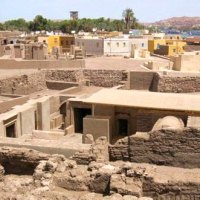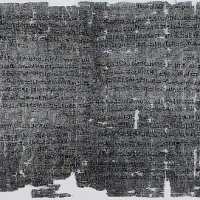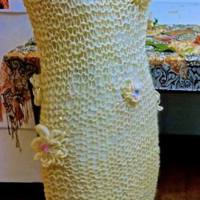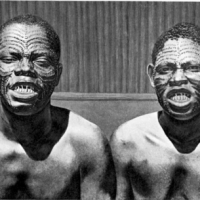Reposting with readers’ suggestions:
What may be the ultimate demise of ex-president Mubarak, his sons, and others – with all of their attendant intrigues – takes me back some 30 years to the assassination of President Sadat, which I want to talk about here. This is a reposting of an earlier blog, updated with recommendations by colleagues.
The day of the assassination – October 6, 1981 – I was visiting people in the area of Upper Egypt in which I had conducted my field research. I can remember so clearly standing in the house of Umm M., chatting with folks, when someone ran in with a portable radio shouting that Sadat had been assassinated. We were all stunned and unsure whether it was true or not. But over the next hour or so reports continued to be given on the radio, that this was indeed the case.

Assassination of Sadat. This is apparently the only photo of the event, the photographer is unknown. Source: Open
This was before electricity or telephones had been installed in most rural areas, and so we discussed the event and what we should do. It was the beginning of a variety of fundamentalist activities in Upper [southern] Egypt that were being organized and carried out by al-Jama’a al-Islamiyya, which further jeopardized events.
We decided that everyone in the village would stay within their own homes, and that I had better leave and drive back up to Cairo. At the time I was the only person [American] fluent in colloquial Arabic in most of the country, and that held its own dangers.
I put-putted up to Cairo in my little old VW, a worthy contribution to my field work by the wonderful Cynthia Nelson, professor and chair of the Department of Anthropology at the American University in Cairo, with which I was affiliated as a Research Scholar.
On the way driving up to Cairo I visited various friends and colleagues to gain more news, of which there was very little. However, police and military were increasing throughout the country and so a friend – an old hand in Egypt – suggested we fly right down to Aswan for a few days, where we thought things would be a bit quieter.
Tickets were easy to get, and after calling the [then] rather down-at-the-heels Old Cataract Hotel in Aswan to secure rooms, off we flew. As we approached the Aswan airport I saw a fighter jet saddling up next to our plane, with wings almost touching, to accompany us into the airport. This is the first time I’ve ever been accompanied by a military escort into an airport and it was a unique experience.
Not only were we accompanied by jets going into Aswan, but the next week when I was back to the project area in S.E Egypt – N.E. Sudan, several jets appeared from the direction of the Nile Valley and flew into and along the base of the large wadi (valley) in which we were located, apparently avoiding sightings and radar as they continued over the Red Sea. A very unique experience.

The ground was thick with fully armed military and anti-aircraft guns. The Hotel had sent a vehicle for us, and off we went to unwind by the Nile. The next morning we went out walking and watched as public buildings were busily being sand-bagged. It was still not clear what was happening. I went to the offices of the Ministry of Interior, where I had a few contacts, and after some chit-chat and tea learned that an invasion to attack the Aswan High Dam was expected. Going to Aswan had clearly been a very bad idea.
I then visited the madyafa – guest house that was located on the outskirts of Aswan – of the Ababda tribes of the Eastern Desert with whom, together with the Beja tribes of SE Egypt, I was at that time directing a project in the Eastern Desert. A group of elders were there and verified the fear of an attack. They were waiting to hear from some of their tribesmen who had been sent investigate.
I love Aswan, but this had been very bad timing. We flew back to Cairo and I found a note waiting, that I should immediately go over to see my Project Officer at USAID, which together with several other organizations*, was funding and/or providing support to the project, of which I was ‘Team Leader’ and Chief of Party. My Project Officer was furious. He said that -“security-types” had just flown in from D.C. and were looking for me, ‘to pick my brains’.
* NAMRU-3, [Naval Medical Research Unit Three], The Ford Foundation, Catholic Relief Services, The American Research Center in Egypt, and The American University in Cairo.At that time, USAID did not want their grantees to be ‘used’ by outside folk. So, he suggested I get out-of-town – go down to our project area in the Eastern Desert, which not only was as remote as one could get and still be in Egypt, but also was in the midst of a vast military zone. And that way, he could truthfully inform the folks from Washington that I could not be contacted.
That seemed an excellent idea, and so the next morning I visited my official counterpart in Cairo, who was the Minister of Health, to discuss a trip down to the project site; for which he agreed, saying that his offices would call the Governor to advise of my arrival. As all of us, he was frazzled over the whole assassination event and aftermath, which we discussed. He said that most of the wounded had been shot in the legs. It was still not clear what was happening.
I got the project’s Nissan Patrol organized with driver, extra fuel and tires, etc. This was a very long and rough drive – nearly two days, with roads giving out along the way.

My project area was the extreme S.E. corner of Egypt- N.E. corner of Sudan
Arriving in Hurgada, the provincial capital, I went to visit the Governor who was my official counterpart in the Provence. More chit-chat and tea, and I relayed my experiences in Aswan and in Cairo. He concurred, that even over by the Red Sea they were arming to expect possible incursions – by whom and why was not totally clear. Possibly from Libya, it was thought, aiming for the Aswan High Dam.
He provided me with a military escort and off we went further south where, during project work, we had collected a variety of human and animal samples to assess health and disease vectors, and socio-economic data, and also developed simple health clinics for the bedouin populations in Bir Shalatein and in Berenice, to check out supplies, our resident doctor, [a very keen Egyptian graduate],and so forth. All seemed well with the project and no invasions seemed in the offing.
This is a beautiful and rugged area;a picture of a house made of driftwood, located on the outskirts of the Shalatein camel market, can be seen in the header to this blog. Many of the purebred racing camels of the Beja are brought here to be sold to Saudis who come over by boat. These camels are considered by many to be the fasted and best one can find. With my background in riding [horses], I did enjoy coursing over the flat desert mounted on one of these marvelous beasts.

For hundreds of years one of the largest camel markets in this region has been at Shalatein. Camels are brought up to the site from eastern and western Sudan and, as here, may be neatly loaded into desert trucks and taken into the Nile Valley, or driven by camel caravan. Source – http://www.redsea.gov.eg shalatein

The Ptolemaic port on the Red Sea located at Berenike has a fascinating history of ocean travel to southern India for spices, and to coastal sites further south along east Africa in purchasing and importing elephants for training in Egypt. Source – http://www.ling.upenn.edu
However, in one of our excursions south of Berenice [see above map], we came upon a military vehicle that had stopped, and whose high ranking passengers were pouring over a large military map of the area. I, and the driver and government rep. were familiar with the area, and we discussed where they were wanting to go. We suggested that they could backtrack a bit, and head west through the upper reaches of Wadi Allaqi, or a wadi north of Allaqi, in order that they could reach their goal of Aswan. We all shook hands and headed in our respective tracks. Only then, perhaps, realizing how peculiar this impromptu meeting in the Red Sea Hills had been.

A portion of the Wadi Allaqi. Source – Nuweibi_overview http://www.gippslandltd
Returning finally to Hurghada, I chatted again with the Governor, discussing about our strange encounter with an Egyptian army vehicle and occupants. He informed me the country was now under martial law and that the Provincial capital of Asyut in the Nile Valley had been attacked by Gama’a Islamiyya and – if I am remembering correctly – that it took two days to reinstate authorities. So it was indeed good that I’d left Upper Egypt when word of the assassination became known.
I went back to Cairo and learned that the security-folk had returned to Washington. Curiously, I don’t remember any further events other that so much talk in Cairo. And, with Mubarak now having proclaimed martial law, everything seemed to go back to a kind of normalcy.
Many questions still remain. Were the Libyans involved, or others, in attacking Egypt from the South? If so, who and why? It was widely thought, both in some diplomatic circles, as well as in the Egyptian Government, that Libyan forces had been sent around southern Egypt (in the Sudan) and were preparing to attack Egypt from that position.
A major difference between the Sadat assassination period and current/recent events in Egypt, Libya, and elsewhere in the Middle East and North Africa where the ‘Arab Spring’ has been taking place, is the availability of communication. Internet, phones, as well as generally more savvy people. This makes for a totally different way of dealing with – as well as with trying to orchestrate – events.
Here are a couple of videos on the Sadat assassination that are quite interesting. Although arabic videos, it is the visual content that is so interesting.
In the following video, the little boy is Sadat’s grandson.
People ran over, throwing chairs upon the dignitaries being shot, and the wounded, dead, and others can be seen aided by others. Names of the attackers are given in Arabic with arrows.
The Assassination of Anwar El Sadat
On 6 October 1981, the month after the crackdown, Sadat was assassinated during the annual victory parade in Cairo. A fatwā approving the assassination had been obtained from Omar Abdel-Rahman, a cleric later convicted in the U.S. for his role in the 1993 World Trade Center bombing. Sadat was protected by four layers of security and the army parade should have been safe due to ammunition-seizure rules. However, the officers in charge of that procedure were on hajj to Mecca.
As air force Mirage jets flew overhead, distracting the crowd, a troop truck halted before the presidential reviewing stand, and a lieutenant strode forward. Sadat stood to receive his salute, whereupon the assassins rose from the truck, throwing grenades and firing assault rifle rounds. The attack lasted about two minutes. Photographer Bill Foley captured one of the last shots of a living Sadat. The photograph is titled “The Last Smile.”
A photo by Bill Foley entitled “The Last Smile” – taken of Sadat just before he was shot. Source – abrahamlincolninquran.blogspot.com-billfoleythe last smile
The lead assassin Khalid Islambouli shouted “Death to Pharaoh!” as he ran towards the stand and shot Sadat. After he fell to the floor people around Sadat threw chairs on his body to try to protect him from the bullets. Eleven others were killed, including the Cuban ambassador a Omani general and a Coptic Orthodox bishop, and 28 were wounded, including James Tully, the Irish Minister for Defence, and four U.S. military liaison officers. Sadat was then rushed to a hospital, but was declared dead within hours. This was the first time in Egyptian history that the head of state had been assassinated by an Egyptian citizen. Two of the attackers were killed and the others were arrested by military police on-site. Islambouli was later found guilty and was executed in April 1982.
In conjunction with the assassination, an insurrection was organized in Asyut in Upper Egypt. Rebels took control of the city for a few days and 68 policemen and soldiers were killed in the fighting. Government control was not restored until paratroopers from Cairo arrived. Most of the militants convicted of fighting received light sentences and served only three years in prison.
I am revising and will be posting a series of other blogs about our work in the Eastern Desert of Egypt and Sudan and related areas of the Beja tribes and their brethren.




























this experience reminds me of the invasion of Cyprus by Turkey in 1974; i was 8, on holiday in greece, staying in athens, and we were due to return to NZ the next day – it took us two weeks to finally get out of the country
LikeLiked by 1 person
Maria, that must have been a nightmare for your parents, with children and all! How our ability to react to these kinds of events has radically changed with cellphones, the internet, etc!
LikeLike
Thanks for sharing this Diana- as always i enjoy reading about your wonderful adventures…hmmm think its time that you compile some of these observations and experiences in a book.
Best wishes
LikeLiked by 1 person
Noelle – Glad you enjoy! As for a book, aren’t the blogs enough? 😉
LikeLike
Wow, Diana! You’ve lived through history. Would love to hear more about it in the future.
LikeLike
Thanks, Karen; Curiously, I never ‘mean’ to at the time! Mean to live ‘through history’, that is – it just happens!
LikeLike